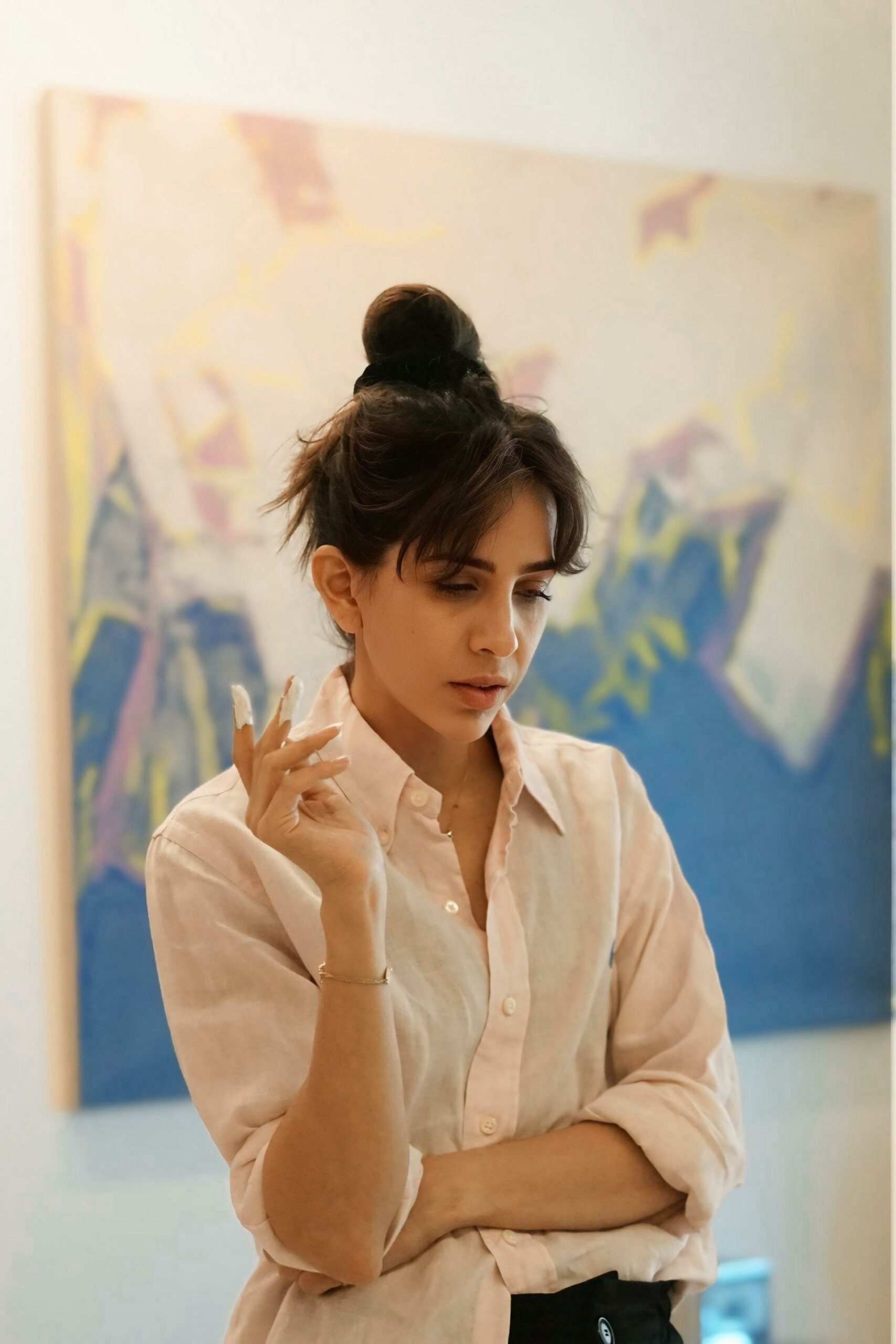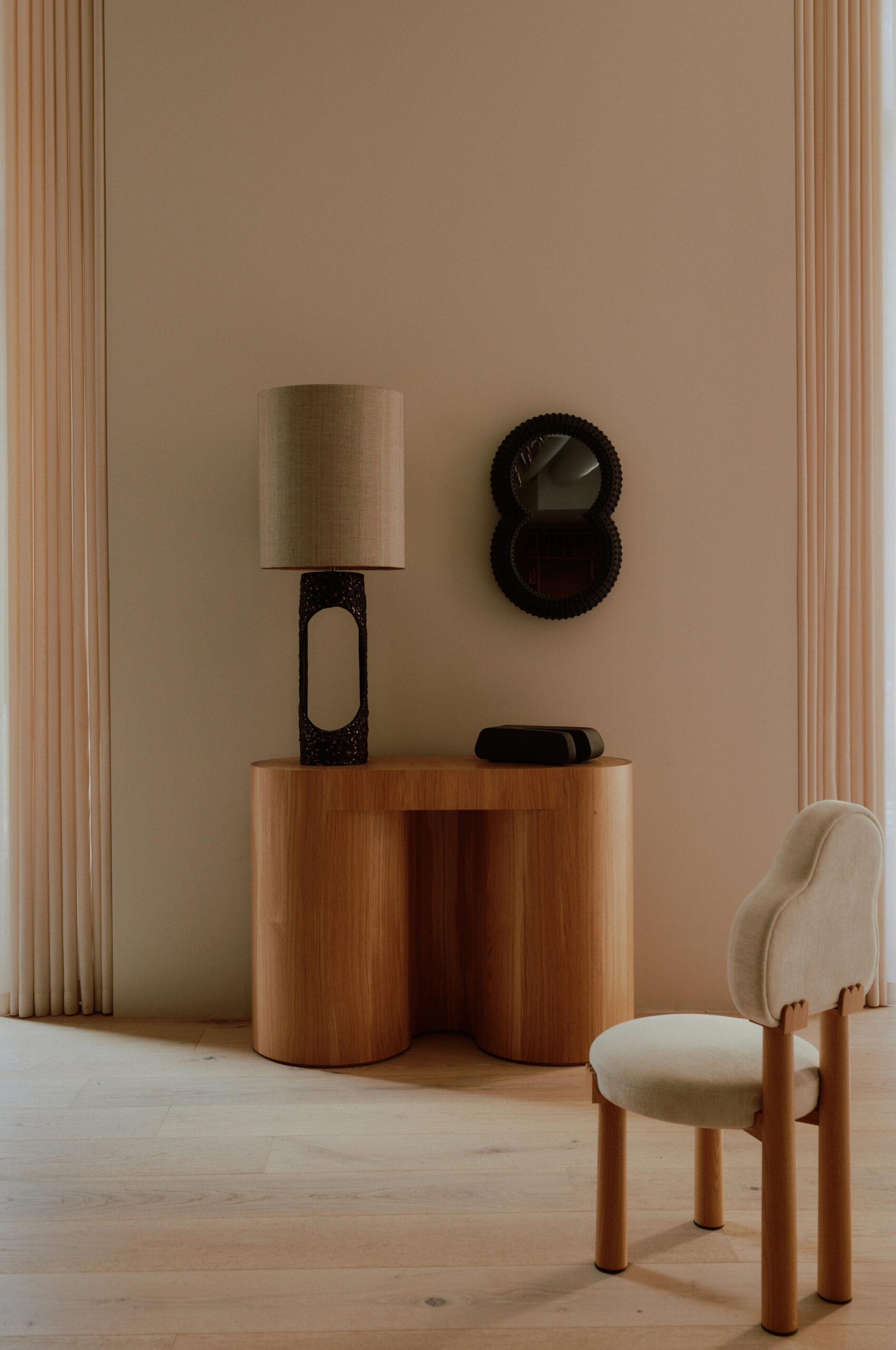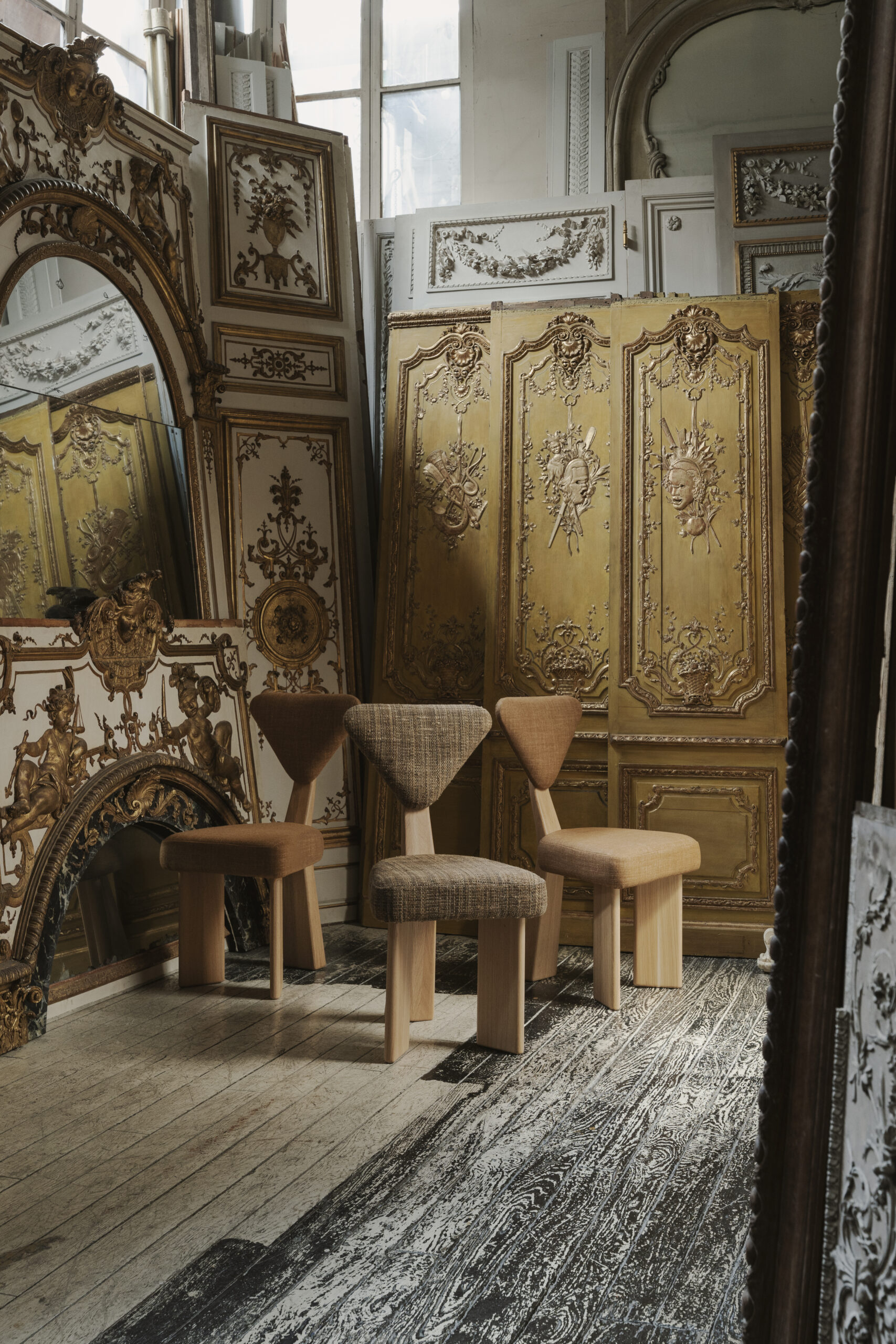By Marie Claire Maison Arabia | Photography By Maxime Seltenrijch
Marie Claire Maison Arabia interviewed Egyptian architect Shahira Fahmy to uncover the story behind Dar Tantora The House Hotel in AlUla’s Old Town, a project that epitomizes the delicate balance between tradition and modernity. Dar Tantora The House Hotel, set in the heart of AlUla’s Old Town, is a project that transforms a 12th-century Islamic-era ruin into an immersive luxury retreat.
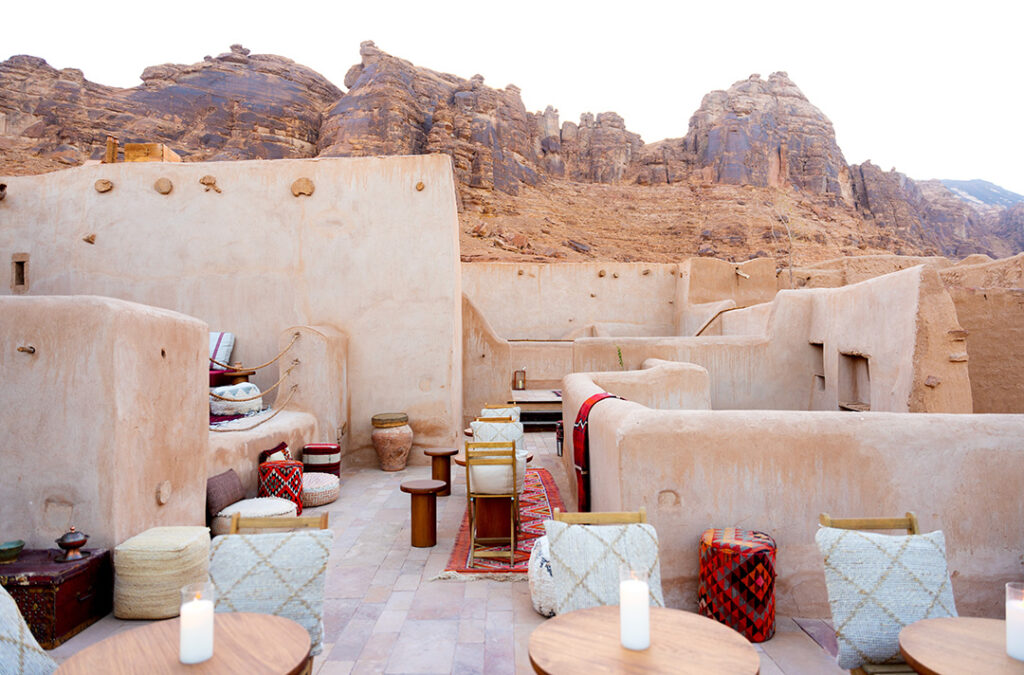
Liberating Design: Less Is More
Dar Tantora’s design was driven by the notion of creating a space where guests could feel liberated—away from distractions, surrounded by nature, and immersed in a simpler rhythm of life. Fahmy explains, “When we’re not always on our phones, when we’re in nature, and when we’re away from distractions, you appreciate more of what you have. You feel free, knowing that less is more.”
For Fahmy, this philosophy mirrors the practice of architecture itself: “You start with so many ideas—almost too many—and then you eliminate the things that are not essential until you are left with only the essence.” At Dar Tantora, this translates to a thoughtful balance of simplicity and richness, where tourists can connect with the unique culture of AlUla, locals can rediscover their heritage, and all guests can enjoy the tranquility of the desert.
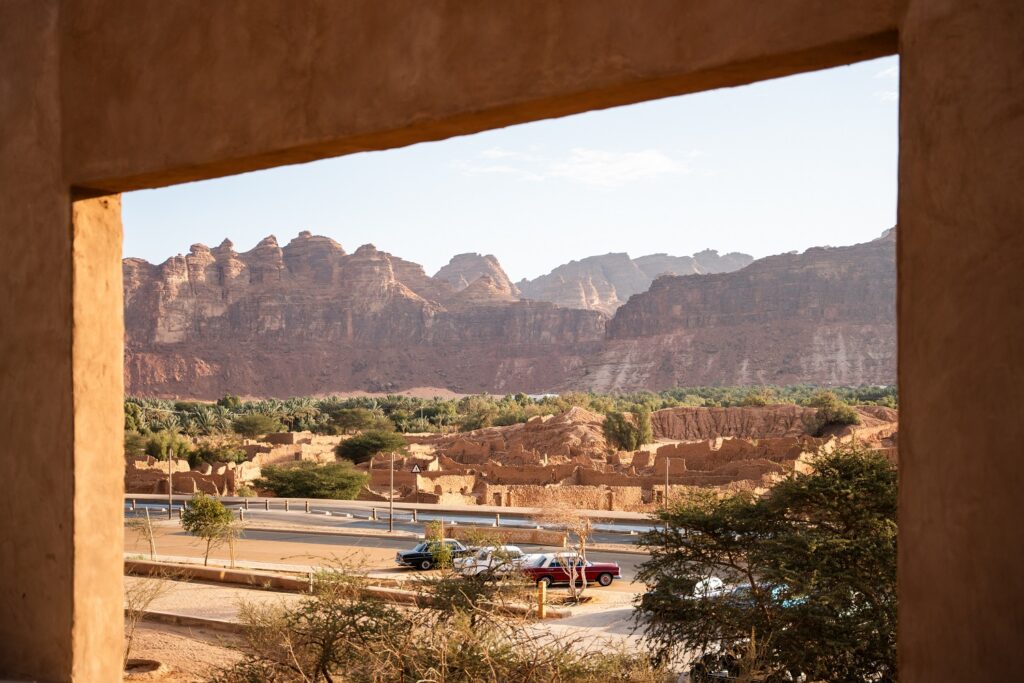
An Intersection of Heritage and Modernity
Fahmy’s process is rooted in a profound understanding of local craftsmanship and cultural context. “My approach involves creating a layered ecology of ideas and actions, unified through a process that bridges conception and realization,” she explains.
My approach involves creating a layered ecology of ideas and actions, unified through a process that bridges conception and realization.
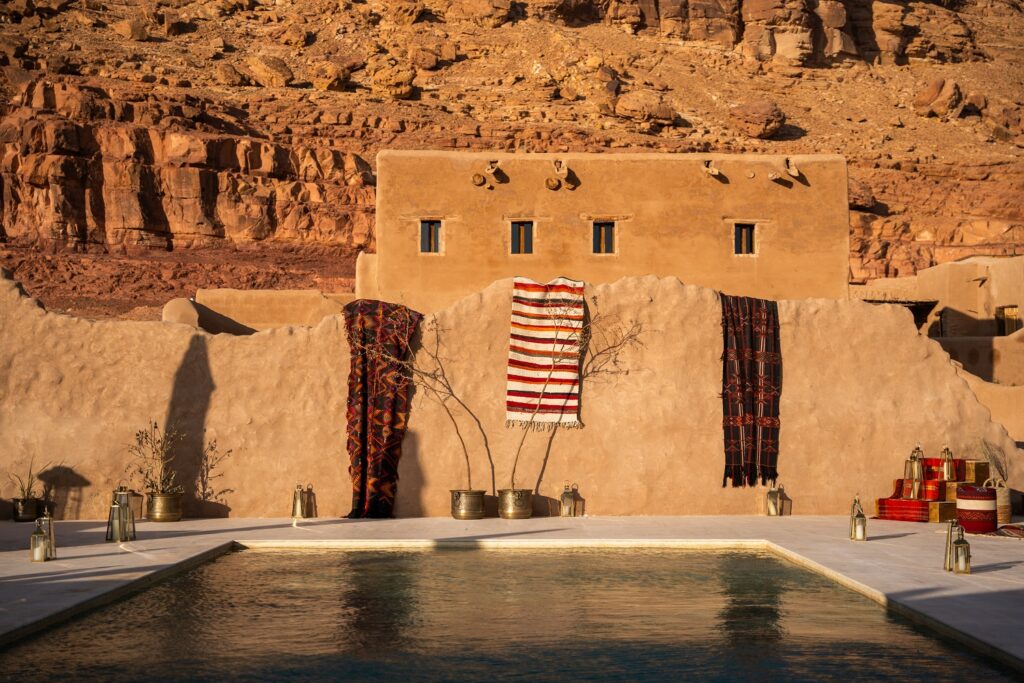
Most of her projects in the Middle East, including Dar Tantora, exist at the intersection of tradition and innovation. They involve constant negotiation with the realities of the site, navigating its social, cultural, and historical drivers. At Dar Tantora, these layers of history were palpable. “Walking through Old Town, an archaeological ruin of a 12th-century Islamic city, one is transported into another time and place. You are guided by the physical evidence of the past, with so much material to delve into, learn from, and engage with,” says Fahmy. The rehabilitation of this site required extensive research into the materials and techniques used in Old Town homes, from mud bricks and palm fronds to Athl wood and stone floors.
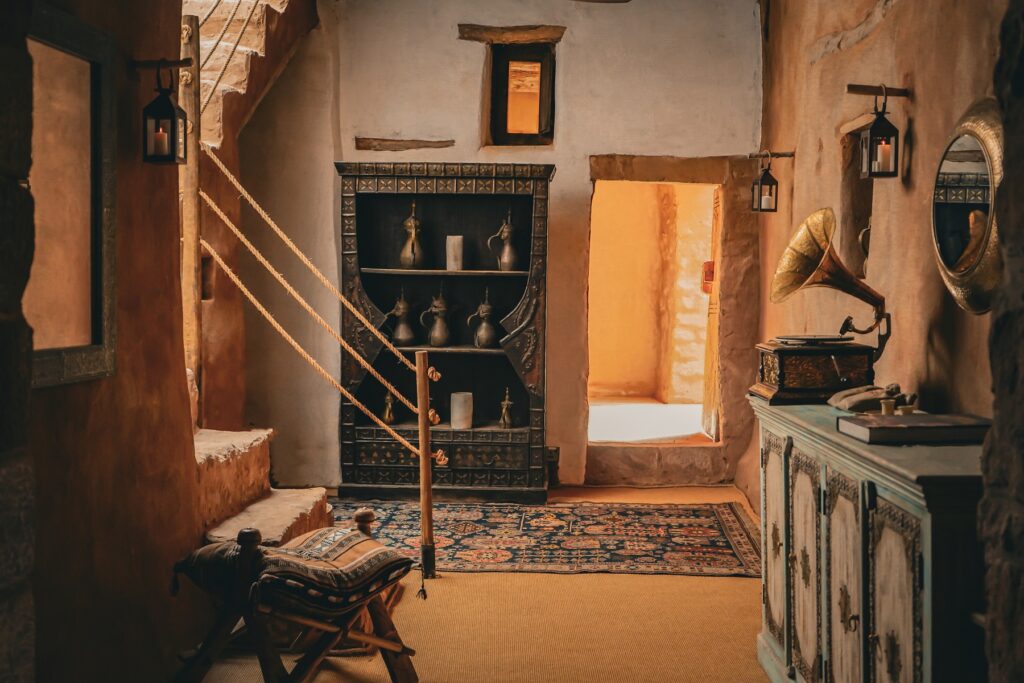
Sustainability at the Core
Dar Tantora’s design embodies both environmental and social sustainability. “Local materials, low energy usage, natural ventilation, and circular-economy principles make the project a hallmark of sustainability,” Fahmy says. Additionally, the adaptive reuse of buildings honours the way of life of Old Town’s early inhabitants.
Local materials, low energy usage, natural ventilation, and circular-economy principles make the project a hallmark of sustainability.
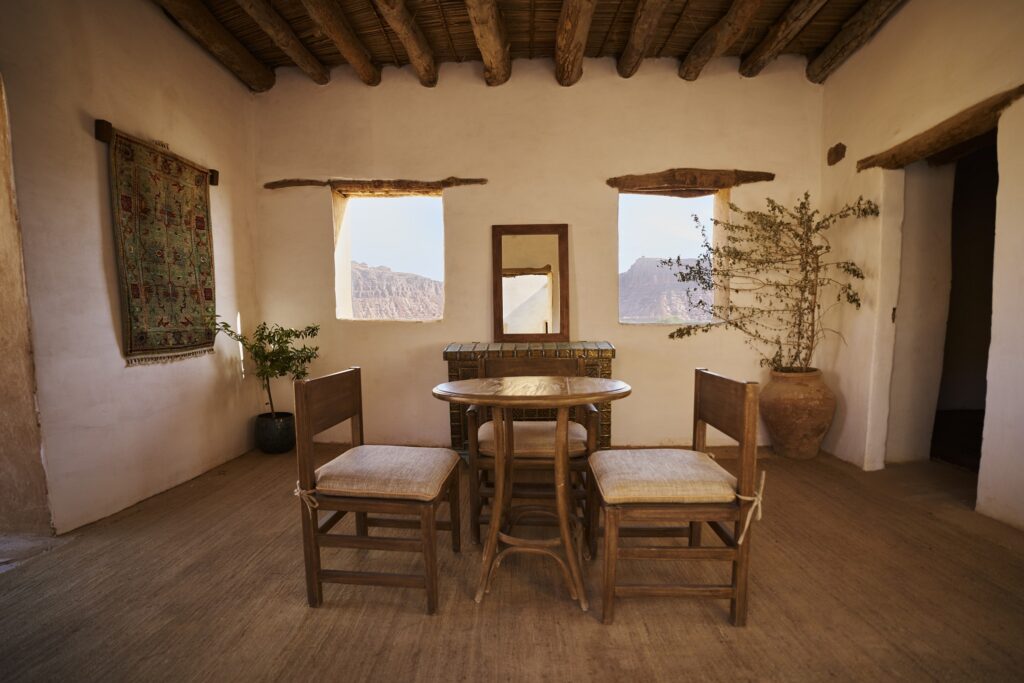
Storytelling Through Architecture
For Fahmy, architecture is also storytelling. “Between research and practice, my work is constantly engaged with questions of resources, materiality, and production,” she explains. At Dar Tantora, the narrative is one of connection: linking the past with the present, the tangible with the intangible, and the individual with the community. The hotel offers a unique experience for all. “Tourists can immerse themselves in our one-of-a-kind culture, while locals can connect with their heritage” says Fahmy. At Dar Tantora, the richness of AlUla’s history and the simplicity of the desert come together to create a retreat that is as timeless as it is forward-looking.
Tourists can immerse themselves in our one-of-a-kind culture, while locals can connect with their heritage

